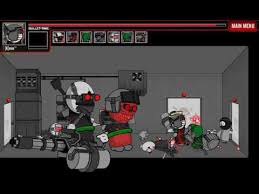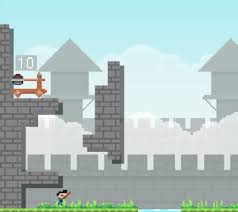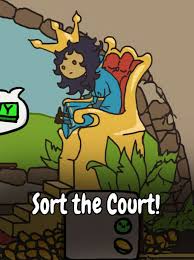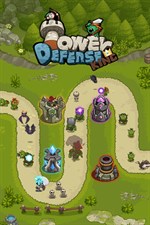Have you ever wondered what happens when science meets fun in the most unexpected way? Enter the world of the Watermelon Drop, an activity that combines physics with a splash of creativity. This intriguing experiment, often seen in online games and school projects, challenges participants to drop a watermelon from a height without it bursting. For students and gaming enthusiasts, this is not just about having fun—it’s a chance to learn valuable lessons in physics and engineering.
In this blog post, we’ll explore the fascinating concept of the Watermelon Drop. We’ll uncover its origins, the science behind it, and how it has become a popular educational tool. Whether you’re a student looking for an engaging science project or a gamer seeking a new challenge, this can offer both excitement and education. Get ready to discover how a simple fruit can teach you about gravity, design, and problem-solving!
Watermelon Drop Unblocked
The origins of the Watermelon Drop are as colorful as the fruit itself. What started as a quirky college tradition quickly grew into a popular experiment for schools and online communities. The idea is simple yet captivating—can you design a contraption to protect a watermelon from a high fall?
Initially, this was a fun university challenge, aimed at bringing students together for a light-hearted test of skills. Over time, it became more than just a pastime. Schools adopted the Watermelon Drop to teach students about physics principles like gravity, impact force, and material resilience. Gamers, too, found it an intriguing challenge, incorporating it into various gaming narratives and simulations.
This evolving tradition highlights how interdisciplinary approaches can engage young minds. It’s a testament to how a simple, fun activity can make learning interactive and appealing.
The Physics of Impact
The Watermelon Drop isn’t just about watching fruit splatter; it’s a practical lesson in physics. When you drop a watermelon, gravity pulls it toward the Earth, accelerating it at 9.8 meters per second squared. Upon impact, the force exerted depends on the watermelon’s mass and the distance it falls.
Students studying physics can use this experiment to calculate potential and kinetic energy. Potential energy is highest before the drop, transforming into kinetic energy as the watermelon falls. Upon impact, this energy must dissipate—often resulting in a delightful mess!
However, by designing protective measures, participants learn about force distribution, energy absorption, and material properties. It’s a rich, hands-on way to grasp concepts that are often confined to textbooks, making physics tangible and more relatable.
Creating a device to protect a watermelon during a drop is a challenge that sparks creativity and innovation. Participants need to think critically about materials and design. The goal is to absorb impact forces and minimize damage to the watermelon.
Common materials include foam, bubble wrap, and cardboard. The design could be as simple as a cushioned box or as complex as a parachute system. Each attempt offers insights into engineering principles and test-and-learn methodologies.
Students and gamers alike benefit from this process. It encourages problem-solving, teamwork, and iterative design—skills that are crucial in both academic and professional settings. The Watermelon Drop is not just an experiment but a launchpad for broader STEM explorations.
Watermelon Drop in Education
The educational value of the Watermelon Drop is immense. Schools worldwide incorporate it into science curricula to make physics engaging and accessible. This hands-on experiment complements theoretical learning, reinforcing concepts through real-world application.
For educators, this is a golden opportunity to merge fun with learning. It helps demystify abstract scientific principles, showing students their everyday relevance. Plus, the collaborative nature of the project fosters communication and teamwork, essential abilities in any field.
Additionally, the Watermelon Drop aligns with modern educational trends emphasizing experiential learning. By encouraging active participation, it helps students retain information better and fosters a lasting interest in science and engineering.
Watermelon Drop into Online Games
The gaming world hasn’t missed the Watermelon Drop trend either. Many online games now incorporate similar challenges, blending fun with educational content. This approach allows gamers to experience the thrill of the drop while subtly learning about physics and engineering.
These games often feature levels requiring players to design protection for virtual objects, mirroring the real-life experiment. Players experiment with different materials and designs, testing their effectiveness in a virtual environment.
For game developers, this presents an opportunity to create engaging content that educates players. It’s a smart way to make gaming more enriching, leveraging entertainment’s power to teach valuable skills and concepts.
Strategies for Winning at Watermelon Drop
Winning at the Watermelon Drop requires more than luck; it’s about strategy and understanding physics principles. The key is to create a design that effectively absorbs impact forces and protects the watermelon from damage.
Consider the materials’ properties—items like foam and bubble wrap are excellent for absorbing shock. Think about structure, too; a cushioned base can distribute forces more evenly. Testing is crucial—trial and error will guide you toward the most effective design.
Students and gamers who succeed in the Watermelon Drop often exhibit a blend of creativity, analytical thinking, and perseverance. It’s a fun way to develop critical skills that are applicable beyond the experiment itself.
While the Watermelon Drop is fun and educational, it’s essential to consider its environmental impact. Using materials mindfully ensures that the experiment remains sustainable and eco-friendly.
Encouraging participants to use biodegradable or recyclable materials helps minimize waste. Schools and gaming communities can promote sustainability by rewarding clever use of resources and recycling efforts.
This aspect of the Watermelon Drop teaches students about environmental stewardship, highlighting the importance of considering ecological impacts in any project. It’s a small but meaningful step toward nurturing responsible future innovators.
Challenges and Competitions
Competitions add an exciting dimension to the Watermelon Drop experience. Schools and online platforms often organize contests, encouraging participants to push their creative limits.
These competitions provide a stage for showcasing innovative designs and solutions. Participants gain recognition for their problem-solving skills, and winners often receive prizes or accolades.
Such events foster a sense of community among participants, promoting collaboration and knowledge exchange. They’re a fantastic way to celebrate innovation while inspiring others to join the Watermelon Drop movement.
Technology to Enhance the Watermelon Drop
Technology can elevate the Watermelon Drop experiment, offering new ways to engage learners and enhance understanding. Schools can use simulation software to model drops before attempting them.
Virtual reality (VR) can add another layer of interaction, allowing students to visualize and tweak their designs in a 3D space. Online platforms can facilitate remote participation, broadening access and inclusivity.
Integrating technology into the Watermelon Drop experience not only makes it more engaging but also prepares students for a future where digital competencies are essential. It’s a bridge between traditional learning and modern innovation.
The concepts learned from the Watermelon Drop experiment have real-world applications. Engineers and scientists use similar principles when designing safety equipment and structures.
For instance, the design of car airbags and helmets involves understanding how to absorb and distribute impact forces effectively. By participating in the Watermelon Drop, students get a glimpse into these professional fields, sparking potential career interests.
Understanding how everyday items rely on science and engineering principles helps demystify these fields for students. It empowers them to see themselves as future innovators capable of solving real-world problems.
Watermelon Drop’s Growing Popularity
The Watermelon Drop’s popularity continues to grow, thanks to its engaging blend of education and entertainment. Social media platforms amplify its reach, with videos and challenges captivating audiences worldwide.
This viral phenomenon highlights the power of fun, hands-on learning experiences. It’s a reminder that education can be dynamic and exciting, inspiring learners of all ages to explore new ideas and concepts.
The Watermelon Drop is more than an experiment; it’s a movement. It embodies the spirit of curiosity, creativity, and collaboration, values that lie at the heart of all successful learning journeys.
Conclusion
The Watermelon Drop is a stellar example of how simple activities can hold profound lessons. For students and gamers alike, it’s an opportunity to explore physics, engineering, and sustainability in a fun, interactive way. By participating in the Watermelon Drop, you’re not just dropping a fruit; you’re embarking on a learning adventure that challenges you to think critically and creatively. If you’re ready to take the plunge, gather your materials and give it a try. Discover the excitement of learning through doing, and see how a watermelon can transform your understanding of science and engineering. For more insights and tips, stay tuned to our blog and join our community of curious learners.













